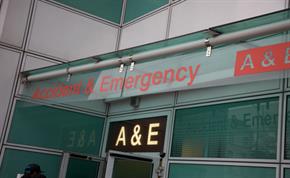
EEAST has a responsibility to work with system partners to achieve effective and timely clinical handover of patients at Emergency Departments (ED) to ensure an effective response to patients waiting in the community.
Handover delays seriously impact on the ambulance service capacity and ability to respond to patients in the community and can lead to patient safety concerns and serious harm.
EEAST is currently working in partnership with NHS England and Improvement (NHSE/I) to move forward with a live trust-wide role-out of the Intelligent Conveyance project, following some local trials. The aim of this project is to provide each patient with the timeliest treatment on arrival at an acute A+E department.
Currently, EEAST Tactical Commanders may enact load levelling at any point to support reducing system pressure and to reduce the risk to patient safety in the community, especially for those who are without any on-scene clinical support.
Load Levelling is enacted, diverting patients away from one acute to another when the original receiving hospital is experiencing delays in offloading patients from ambulances.
Intelligent Conveyance seeks to pre-empt, and potentially prevent, hospital offload delays by monitoring demand and performance for both EEAST AND acute hospitals, utilising live information from integrated Trust and hospital systems to make informed decisions based on patient safety, minimising risk and providing the best patient experience.
The live roll out of the process will take place on Wednesday 1st December 2021 across EEAST. MDT messages will alert crews as to when the process has commenced.
What will this mean to our crews?
Patients falling within pre-determined criteria, who require conveyance to an acute emergency department, may be conveyed to an alternative receiving acute ED.
Crews will be notified if their patient is being considered for Intelligent Conveyance and advised as to the new receiving acute ED
As an example of the principle, a patient being conveyed to their local acute ED, 15 minutes away, may have to wait an hour and a half to be handed over into hospital care. Alternatively, a 25-minute journey to an alternate acute ED, may have a handover time within 15 minutes (mandated as a National Quality Requirement (schedule 4b) within the NHS standard contract.)
Transporting the patient to an alternative acute ED could assist crews in becoming available to respond to outstanding calls in the community within a shorter time frame and to potentially reduce late finish times whilst waiting to offload patients at busy hospitals.
The impact of Intelligent Conveyance on Trust resources, trigger points and exclusion criteria are being constantly reviewed. Current exclusion criteria include, but is not necessarily limited to:-
Crews identified for potential Intelligent Conveyance will be contacted directly whilst on scene and, if their patient falls outside the exemption criteria, may be asked to convey to an alternate acute Hospital in order to expedite the assessment and treatment of their patient.
Published 1st December 2021